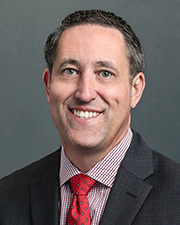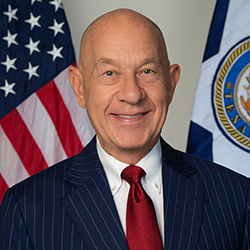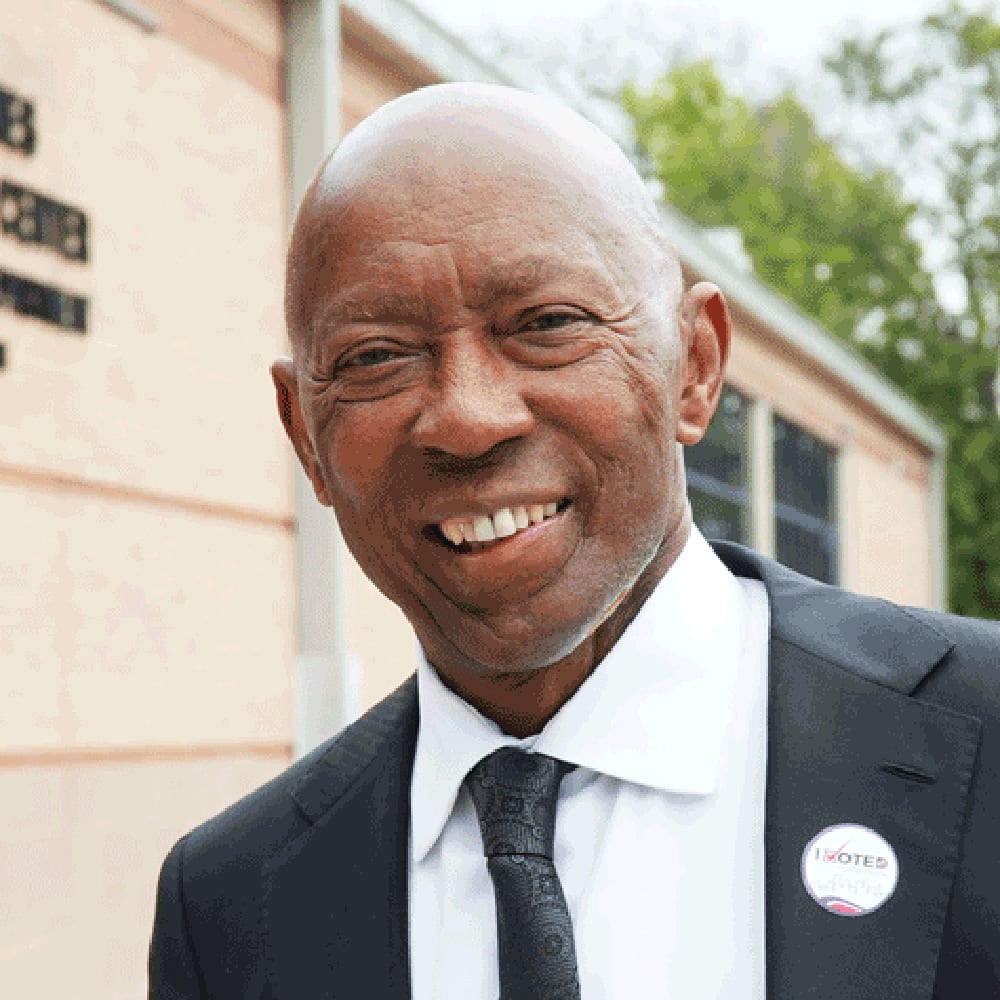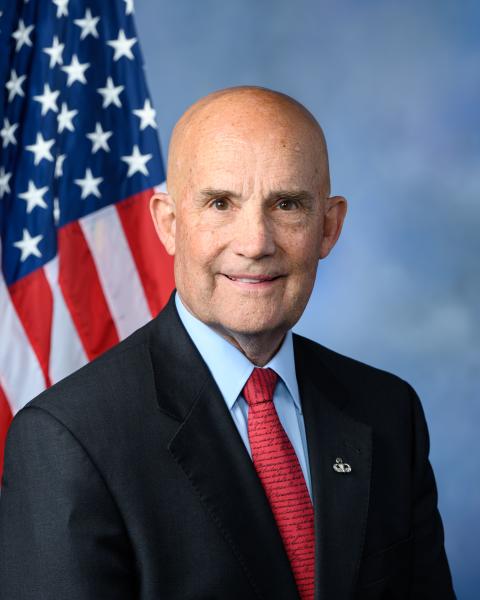One forty-six. And counting.
The number of measles cases associated with an outbreak in western Texas has grown to 146, according to new data released Friday.
Almost all of the cases are in unvaccinated individuals or individuals whose vaccination status is unknown, with 79 unvaccinated and 62 of unknown status. At least 20 people have been hospitalized so far, according to the Texas Department of State Health Services (DSHS).
Just five cases have occurred in people vaccinated with one dose of the measles, mumps, rubella (MMR) vaccine.
Children and teenagers between ages 5 and 17 make up the majority of cases with 70, followed by 46 cases among children ages 4 and under.
So far just one death has been reported in an unvaccinated school-aged child, according to DSHS. It marks the first measles death in the U.S. in a decade, according to data from the Centers for Disease Control and Prevention.
Gaines County is the epicenter of the outbreak, with 98 cases confirmed among residents, according to DSHS. State health data shows the number of vaccine exemptions in the county have grown dramatically.
Roughly 7.5% of kindergarteners in the county had parents or guardians who filed for an exemption for at least one vaccine in 2013. Ten years later, that number rose to more than 17.5% — one of the highest in all of Texas, according to state health data.
See here for the previous update, which was just two days ago and had 124 reported cases as of Tuesday. That’s 22 more cases from Tuesday to Friday, and as we know it’s an undercount. We just don’t know by how much yet. But because there are large populations of unvaccinated people, mostly children, there’s a lot of room for growth. In Texas and elsewhere.
You know who we haven’t heard anything from on this so far? Our elected state leaders. Don’t expect that to change.
But neither Gov. Greg Abbott nor lawmakers from the hardest hit areas have addressed the outbreak publicly in press conferences, social media posts or public calls for people to consider getting vaccinated. State and local authorities in West Texas have not yet enacted more significant measures that other places have adopted during outbreaks, like excluding unvaccinated students from school before they are exposed, or enforcing quarantine after exposure.
The response to Texas’ first major public health crisis since COVID is being shaped by the long-term consequences of the pandemic, experts say — stronger vaccine hesitancy, decreased trust in science and authorities, and an unwillingness from politicians to aggressively push public health measures like vaccination and quarantine.
“Everybody is so sensitive to the vaccine topic due to COVID,” said Ector County Judge Dustin Fawcett. “We need to be very careful about how we address this topic … Our job is to provide the resources, not to tell people what they need to do.”
If there was ever an appetite for more aggressive government response to a disease outbreak, it’s long gone in Texas, said Catherine Troisi, an infectious disease epidemiologist at UTHealth Houston.
“I think there’s less political will now” than before COVID, she said. “Texas is such an independent state. People don’t want to be told what to do, forgetting that what they do can affect others. And measles is an example of that.”
[…]
School districts in Texas are required to exclude unvaccinated students for at least 21 days after they are exposed to measles. Because measles is so contagious and can remain in the air for up to two hours after an infected person has left the area, large numbers of students could be excluded from school at once, Texas Department of State Health Services spokesperson Lara Anton said.
But to proactively exclude unvaccinated students before they are known to be exposed requires the Texas health commissioner to declare a public health emergency, which can be activated when there is a health threat that potentially poses a risk of death or severe illness or harm to the public. Anton said there are no plans to declare an emergency at this time, noting that more than 90% of Texans are vaccinated for measles.
State and local authorities are also recommending that unvaccinated people who have been exposed to measles quarantine at home for 21 days. But that quarantine period is not enforced or tracked, Anton said.
In Ector County, where there have been two confirmed cases, Fawcett said he doesn’t anticipate state or local authorities pursuing widespread shutdowns like during COVID.
“We haven’t really been given guidance of what perhaps even we should do” in case of a county outbreak, he said. “My best guess is to provide resources and information. There’s not going to be a call to quarantine, or any of that, unless an outbreak happens at a particular educational facility.”
In a statement, Andrew Mahaleris, Abbott’s press secretary, said Texas was prepared to “deploy all necessary resources to ensure the safety and health of Texans,” noting that DSHS was helping local authorities with epidemiology, immunization and specimen collection, and had activated the State Medical Operations Center to coordinate the response.
House Speaker Dustin Burrows, a Republican from Lubbock, said in a statement that he was closely monitoring the situation, and was praying for the family who tragically lost their child.
“At this time, there are no local unmet needs, but we are remaining vigilant and will respond as needed,” he said.
State Rep. Ken King and state Sen. Kevin Sparks, Republicans who represent Gaines County, did not respond to requests for comment about the measles outbreak. Neither they nor Abbott or Burrows have posted publicly about the outbreak.
I’ll give Judge Fawcett a bit of grace, since I’m sure he has people screaming in his face all day right about now. The DSHS spokesperson is just doing her job. All of the elected officials named in this excerpt are cowards, the whole lot of them.
Here’s an AP story on the Mennonite community at the heart of this outbreak.
The outbreak has particularly affected Gaines County and some adjacent areas.
While it’s not immediately clear which Mennonite community has been affected, the Gaines County area includes a community with a distinctive history.
Many other North American Amish and Mennonites trace their roots to immigration directly from Western Europe in the 18th and 19th centuries, said Steven Nolt, professor of history and Anabaptist Studies at Elizabethtown College in Pennsylvania.
In contrast, the Seminole area includes a community of Old Colony Mennonites, which has a much more circuitous history of migration, Nolt said.
Old Colony Mennonites migrated first to the Russian Empire, then to Canada, then to Mexico, fleeing government pressures to assimilate, according to Nolt. As economic conditions deteriorated in Mexico, some moved to such areas as Gaines County and other communities in Texas and nearby states in the 1980s and 1990s. All along, they have preserved their Low German dialect and other cultural distinctions.
Gaines County is also home to one of the highest rates of school-aged children in Texas who have opted out of at least one required vaccine, with nearly 14% skipping a required dose last school year.
“Historically and theologically, there has not been any religious teaching against immunization in Mennonite circles,” Nolt said via email. “There’s no religious prohibition, no body of religious writing on it at all. That said, more culturally conservative Mennonite (and Amish) groups have tended to be under-immunized or partially-immunized.”
Partly, he said, that’s because they don’t engage as regularly with health care systems as more assimilated groups do. Many traditional Anabaptist groups did accept vaccinations that were promoted in the mid-20th century, such as for tetanus and smallpox, but they have been more skeptical in recent years of newly introduced vaccines, Nolt said.
But Old Colony groups who arrived in the late 20th century also “missed the whole mid-century immunization push, as they weren’t in the U.S. at that time.”
The story notes that the Mennonites came to America after passing through multiple other countries because they had been oppressed for unlike other faiths. That right there is one of the founding stories of America. I’m very sorry this happened to them, and I hope everyone who is now sick or will become sick recovers fully. I also hope they take this opportunity to revisit their history with vaccinations. It’s the only way.
“Once you get this big an epidemic, and you get numbers up in hundreds or more, it’s almost inevitable you’ll see a childhood death, and maybe more,” said [Houston-based infectious disease researcher Dr. Peter] Hotez, the co-director of the Center for Vaccine Development at Texas Children’s Hospital and the dean of the National School of Tropical Medicine at Baylor College of Medicine. “…It’s really sad.”
[…]
The current outbreak is the state’s largest in 30 years and has already spread to neighboring New Mexico. Hotez and other experts don’t believe it will subside anytime soon, either, because measles is highly contagious. Up to nine in 10 people who are not vaccinated will become infected after being around measles, according to the CDC.
“I think these numbers will continue to accelerate for a while,” Hotez said. “So this is going to be a very large, very dangerous measles epidemic.”
[…]
How do you contain an outbreak once it’s begun?
The only efficient way is through a catch-up measles vaccination campaign. If your kids haven’t been vaccinated yet, now is the time to do it, and there’s two reasons. One, it will prevent you from getting infected. But even if you do get exposed to the virus, if you get vaccinated within 72 hours after exposure, it will either mitigate the symptoms or prevent you from getting the infection altogether.
The single most important thing you can do is a public relations campaign, set up as many vaccination clinics as possible, and really explain to parents the urgency of vaccinating. And also, for adults who have not gotten vaccinated.
I read somewhere this week (and then lost the link) that Lubbock had vaccinated over 100 people since the start of the outbreak. That’s good, but obviously there’s a long way to go. If you or someone you know hasn’t had their MMR shots, get them. If you only had one, get boosted. If you were born in the late 50s or early 60s, there’s a good chance the vaxx you got then was an older version that is no longer used because it was less effective. You know what to do. Reform Austin, the San Antonio Report, and Foolish Watcher – you get to scroll past some delightful reactions from true wingnuts who feel betrayed by some recent Trumpery – have more.
UPDATE: Oh, goodie.
As a measles outbreak thrusts Texas into the national spotlight, a San Antonio-area school has reported a case of another highly transmissible disease.
Charter school Legacy Traditional School-Cibolo on Friday confirmed to the Current that one of its first-grade students tested positive for rubella, sometimes referred to as “German measles” or “three-day measles.”
Despite the similar name and symptoms, which include a rash, rubella is different from measles, the highly contagious disease at the center of the Texas outbreak. State health officials have confirmed 146 measles cases as of Friday, and one child died earlier this week in a Lubbock hospital.
Sean Amir, the public relations manager at Vertex Education, Legacy Traditional School’s management company, told the Current that the charter school informed state and federal authorities about the rubella case and is now monitoring the situation.
“The school followed protocols to inform state health services and the Center for Disease Control[CDC], and they’ve been working closely with them to monitor and supply all protocols and safety procedures for students and staff on campus,” Amir added.
However, Texas Health and Human Services (HHS) spokesman Chris Van Deusen said the department isn’t aware of any rubella cases in the San Antonio area.
“No confirmed measles or rubella cases in Guadalupe or Bexar counties at this point,” Van Deusen emailed the Current at 11 a.m. Friday.
Although rubella is highly contagious, spreading primarily through respiratory droplets, it’s not as potentially dangerous as measles. Even so, the ailment can cause severe congenital disabilities such as deafness and miscarriage if contracted by pregnant women.
Yes, rubella is not the same as measles, but it’s still contagious and potentially very harmful. It’s the “R” in the MMR vaccine – mumps is the other “M” – so draw your own conclusions. I hope this young patient heals up fully and quickly.
UPDATE: Oh, boy.
The Houston Health Department on Friday was investigating two possible cases of measles, a development that comes as the massive Houston Livestock Show and Rodeo is drawing thousands of visitors into the city for livestock exhibitions, concerts and other events.
“The Rodeo is aware of the measles outbreak in west Texas and is closely monitoring the situation with the Houston Health Department,” the Houston Livestock Show and Rodeo said in an emailed statement Friday evening.
“For those that are unvaccinated or immunocompromised, measles, flu and even the common cold are illnesses that need to be considered,” the Rodeo organizers’ statement said. “Those that have health concerns may want to consider whether attending any large event is right for you. We look forward to a safe 2025 Rodeo.”
It’s unclear whether the two people in the city of Houston who are suspected of having measles – a highly contagious and dangerous disease – are children or adults, or if their illnesses are connected to the deadly outbreak in West Texas. A spokesman for the city’s health department would only confirm that two possible measles cases are under investigation and that no other information was being released at this time.
[…]
Meanwhile, other cases were being reported across Texas this week that appear to be unrelated to the West Texas outbreak.
On Friday health officials in Austin announced an infant had tested positive for measles, an exposure that occurred during a family vacation in another country. While the rest of the family was vaccinated, the baby wasn’t. Children typically aren’t vaccinated against measles until they are about a year old. The baby’s illness is the first measles case in Austin since 2019.
“As measles has arrived in our community, I’m calling on everyone to make sure they’re protected against this vaccine-preventable disease,” said Dr. Desmar Walkes, Austin-Travis County Health Authority.
On Wednesday, officials in Rockwall County announced that an adult resident of that area had been diagnosed with measles. That case also was not believed to be connected with the West Texas outbreak, county officials said.
In January, there were two additional measles cases in the city of Houston, also unrelated to the West Texas outbreak. Those two cases, which were linked to international travel, involved two adults who lived in the same household and were not vaccinated against measles.
That’s a lot of cases out there. Once again, we must hope that the Houston ones remain isolated. Did I mention that everyone who isn’t fully vaccinated really needs to do that?




















